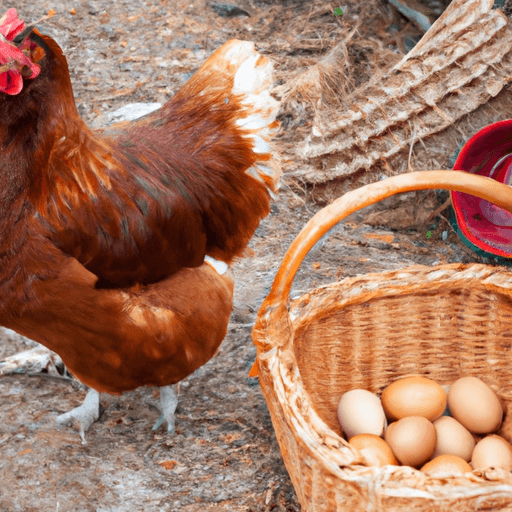The Rhode Island Red is a versatile heritage breed of chicken known for its prolific egg production. These large birds have a red coat of feathers with black tail feathers and distinctive features such as a bright red wattle, single comb, and orange-red eyes.
They are considered dual-purpose birds, suitable for both meat and egg production. Rhode Island Reds are known for their excellent egg-laying abilities, producing around five to six brown-colored, large eggs per week.
Origins and History of the Rhode Island Red
The Rhode Island Red, developed in Rhode Island in the 19th century, has a rich history and is known for its prolific egg-laying capabilities.
The breed’s development began with the crossing of Malay, Shanghai, Java, and Brown Leghorn chickens. The goal was to create a bird that was hardy, adaptable, and produced a high quantity of eggs.
The Rhode Island Red quickly gained popularity due to its exceptional egg-laying abilities and its ability to thrive in various climates. It became a favorite among farmers and backyard chicken keepers alike.
Today, the Rhode Island Red remains one of the most popular chicken breeds due to its versatility, hardiness, and consistent egg production. Its rich history and reputation as a reliable egg layer continue to make it a sought-after breed among poultry enthusiasts.
Characteristics and Temperament of the Rhode Island Red
Known for their active yet calm demeanor, Rhode Island Reds are curious and loving birds that can make a great addition to any backyard flock. These birds adhere to specific breed standards that outline their physical characteristics.
Rhode Island Reds have a red coat of feathers with black tail feathers highlighted by hints of green. They also have a bright red wattle and single comb with spikes or a rose comb.
These birds are also known for their prolific egg-laying capabilities. When raising Rhode Island Red chicks, it is important to provide them with proper care and nutrition to ensure their healthy growth. They require a warm and secure brooder, a balanced diet, and regular vaccinations to protect against common diseases.
Egg Production and the Versatility of the Rhode Island Red
Renowned for their ability to produce a consistent supply of large, brown-colored eggs, Rhode Island Reds are highly sought after by backyard chicken keepers. These versatile birds are not only valued for their egg-laying abilities but also for their suitability as a meat source.
When it comes to maximizing egg production in Rhode Island Reds, there are a few tips to keep in mind. Providing a balanced diet with high-quality layer feed and ensuring access to clean drinking water is essential. Creating a comfortable and stress-free environment, including proper housing and space requirements, will also contribute to increased egg production.
Regularly monitoring for any health issues and implementing disease prevention measures, such as vaccinations, will help maintain the Rhode Island Reds’ overall health and productivity. With their dual-purpose capabilities and the potential for abundant egg production, raising Rhode Island Reds offers both meat and egg benefits to backyard chicken keepers.
Climate Hardiness and Care for the Rhode Island Red
Raised in various climates, Rhode Island Reds are hardy chickens that can handle both extreme cold and heat, making them adaptable to different environments. These versatile birds have specific preferences when it comes to roosting and dietary needs.
Roosting Preferences:
- Rhode Island Reds prefer roosting on sturdy perches, approximately 8 to 10 inches off the ground.
- They feel secure when roosting in elevated areas, such as inside the coop or on tree branches.
- Providing enough perch space is essential to ensure their comfort and prevent overcrowding.
Dietary Needs:
- Rhode Island Reds have relatively low dietary requirements and are not picky eaters.
- They thrive on a balanced diet of quality layer feed, supplemented with occasional table scraps and foraging opportunities.
- Clean drinking water should be readily available at all times to keep them hydrated and healthy.
Housing Requirements and Health Considerations for the Rhode Island Red
Rhode Island Reds require a minimum of 4 square feet of space inside the coop and 15 square feet of outdoor space per bird. When setting up a coop for Rhode Island Reds, it is important to provide enough space to ensure their comfort and well-being.
This breed is known for its hardiness and prolific egg production, but it is also important to consider their health needs. To prevent diseases, it is crucial to maintain a clean coop and prevent overcrowding. Creating good dust bathing areas can help prevent mites and ectoparasites.
Regularly checking the birds for bugs and providing vaccinations, like for Mareks, can also aid in disease prevention. By following proper coop setup and disease prevention measures, Rhode Island Reds can thrive and continue to provide their owners with abundant eggs.







